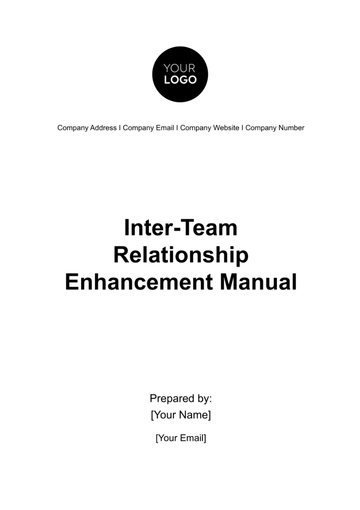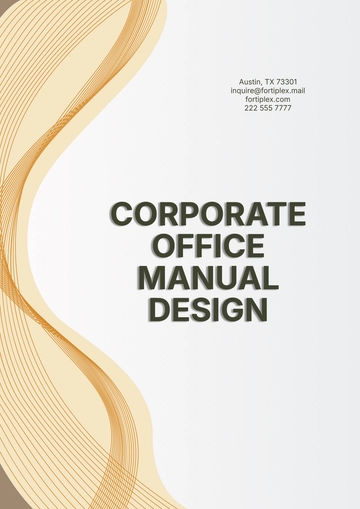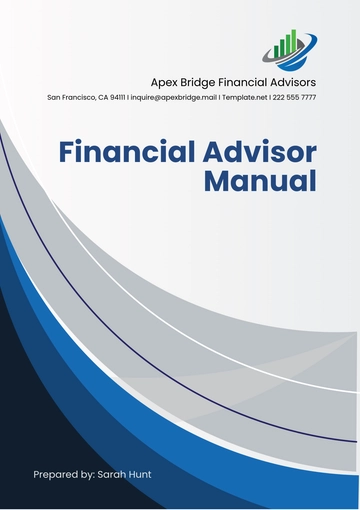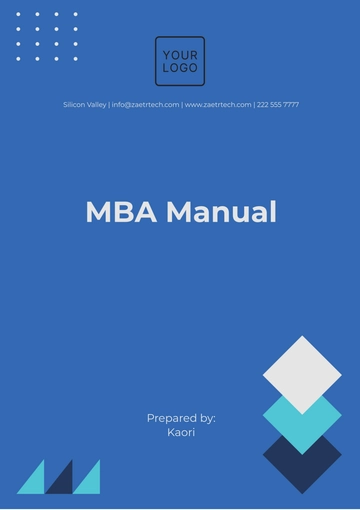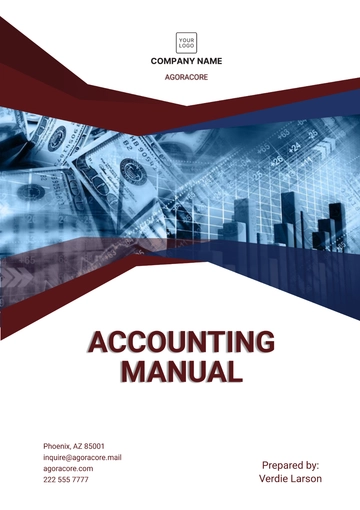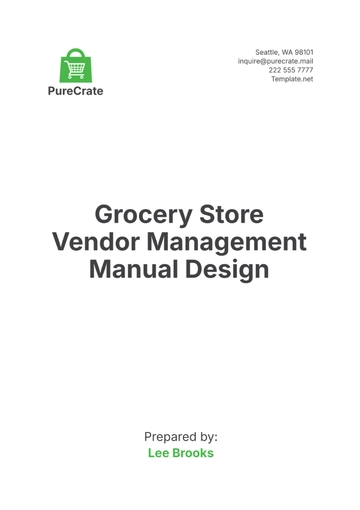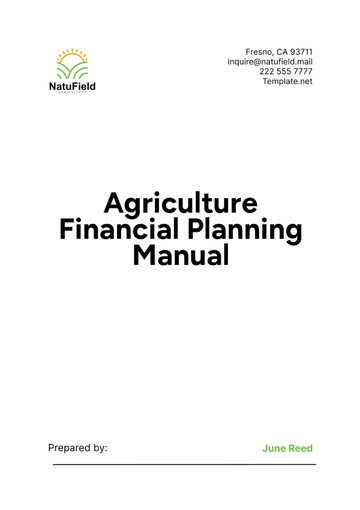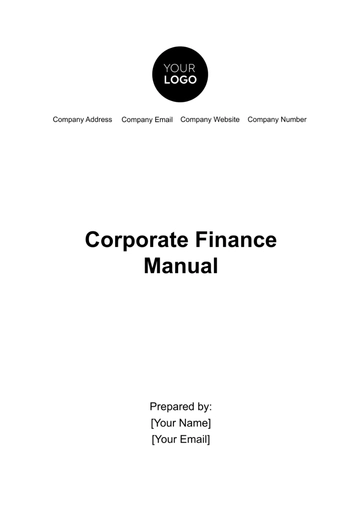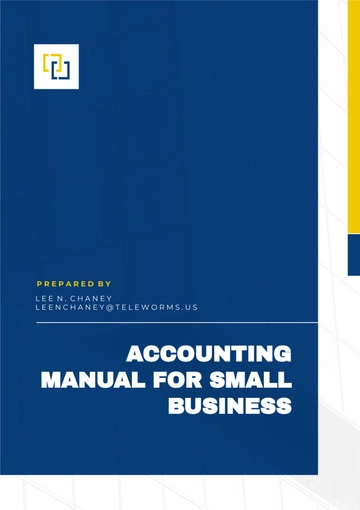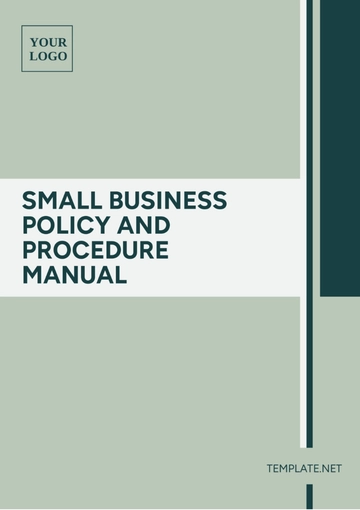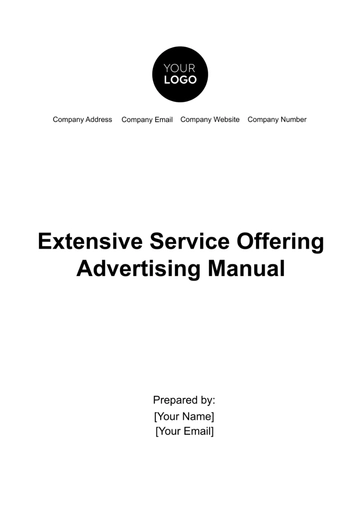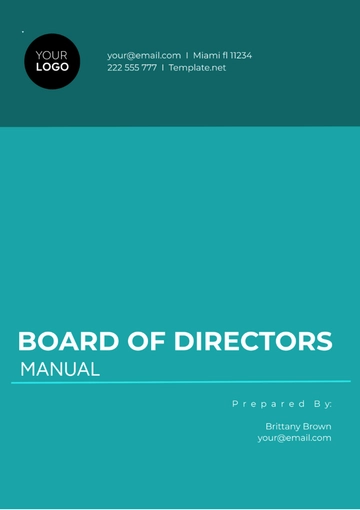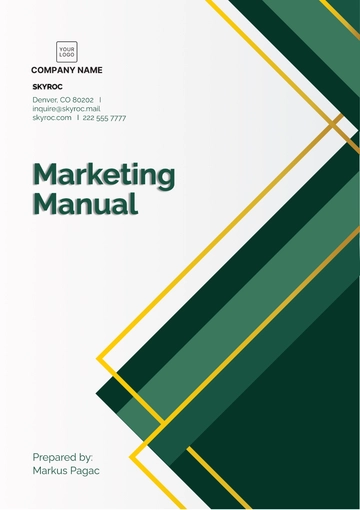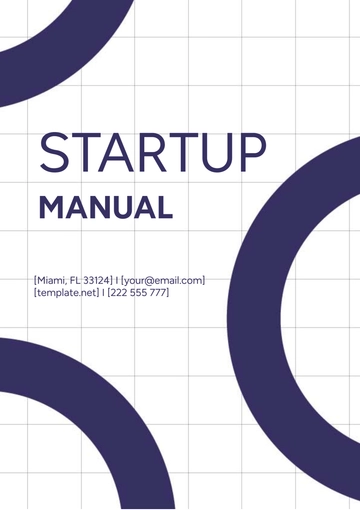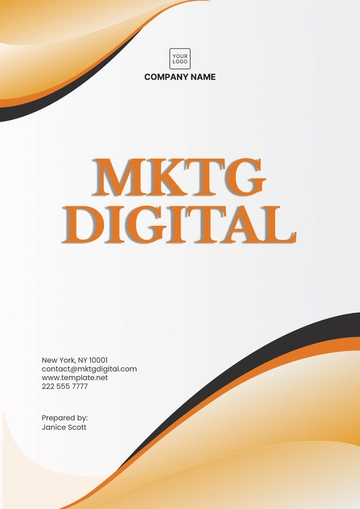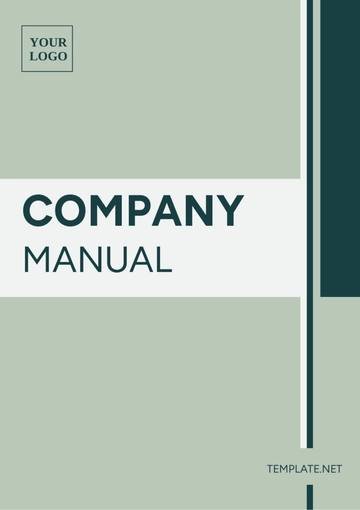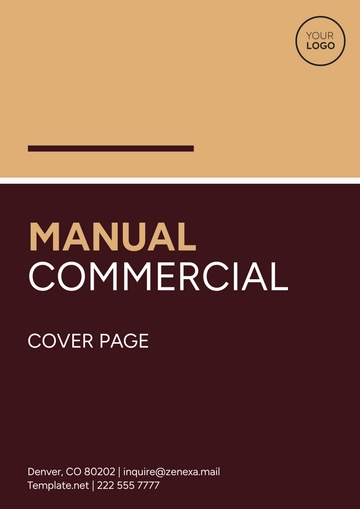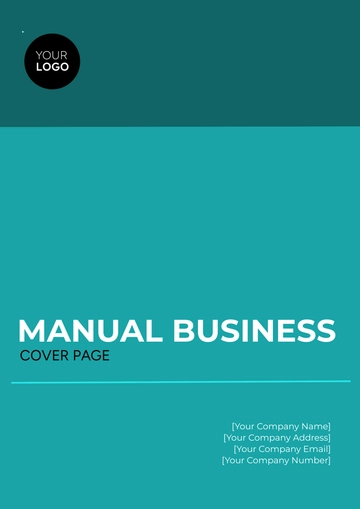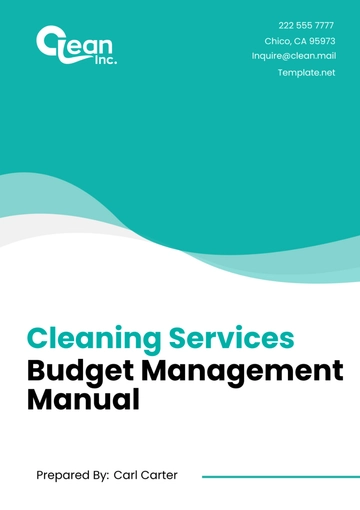Free Sales Negotiation Manual
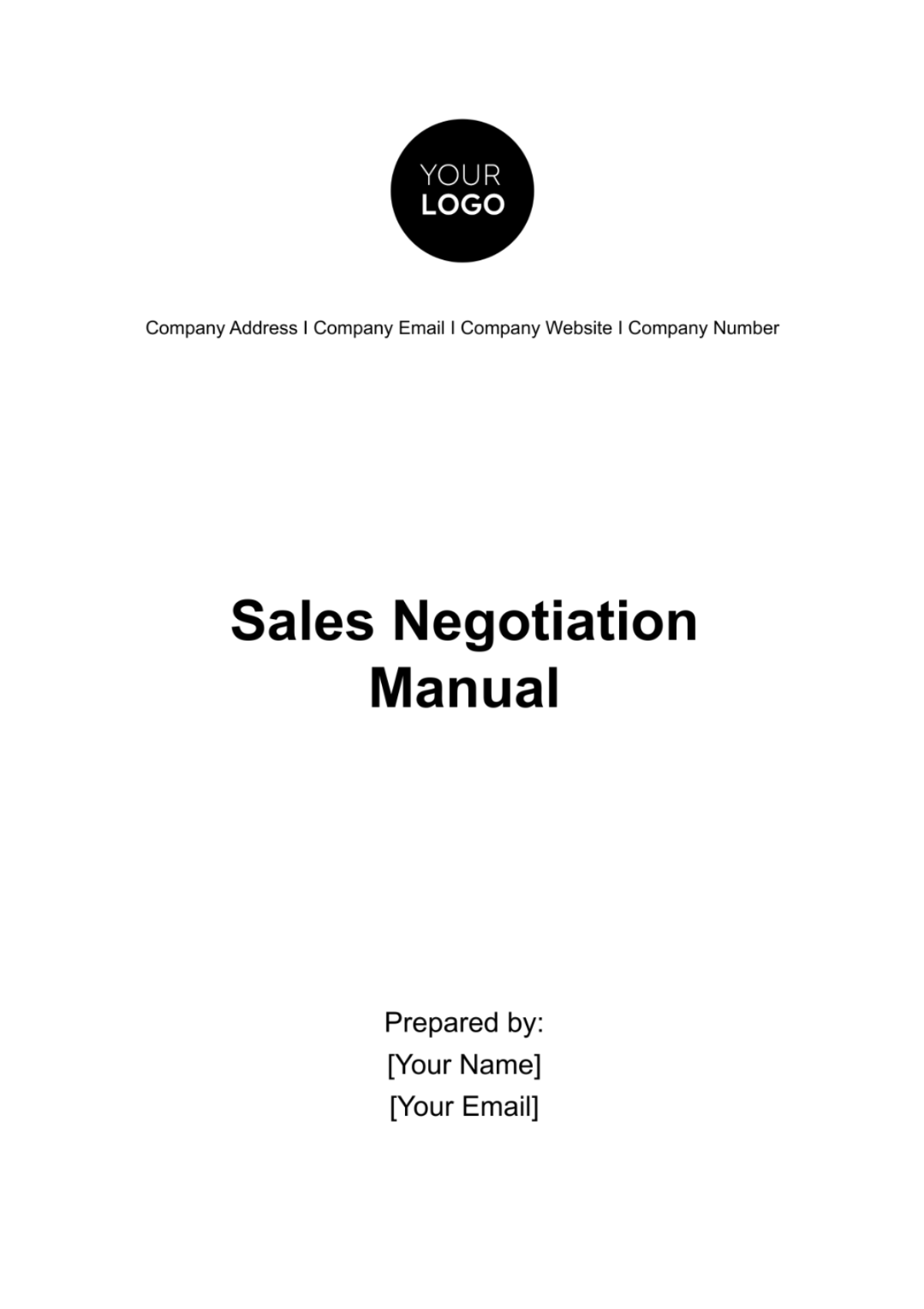
A. Introduction
Welcome to the Sales Negotiation Manual for [Your Company Name], a foundational document designed to guide you through the intricate dynamics of client interactions, deal-making, and relationship management. As part of our esteemed sales team, you have the opportunity to serve as a key catalyst in driving our business forward.
This manual serves multiple purposes: It's not only a comprehensive guide to mastering the art and science of sales negotiation, but also a tool to help you align your negotiation practices with our corporate ethos, business goals, and long-term strategy.
By adhering to the best practices and approaches outlined in this manual, you will be contributing to the collective expertise and success of [Your Company Name]. Your role is not just transactional; you are an ambassador of our values and a crucial element in our growth trajectory.
B. The Importance of Sales Negotiation
In the increasingly competitive business landscape, the importance of sales negotiation cannot be overstated. This complex and nuanced process serves as a pivotal function within our overall business operations. While the ultimate goal is to facilitate the exchange of goods, services, or terms, the implications of successful sales negotiations extend far beyond the completion of a transaction.
1. Revenue Growth
Sales negotiation is the linchpin that can significantly amplify revenue streams. The financial gains from effective negotiations can then be reinvested into our products, services, and customer experiences, creating a virtuous cycle of growth and innovation.
2. Brand Enhancement
Every interaction with a client is an opportunity to strengthen or weaken our brand. Effective sales negotiations not only bring in business but also enhance our reputation as a fair, reliable, and solution-oriented partner. This positive brand perception can be invaluable, setting us apart in a marketplace where consumers have myriad options.
3. Client Retention
Long-term business relationships often have their roots in well-negotiated agreements. When both parties find value in an arrangement, the likelihood of client retention significantly increases. Retaining clients is generally more cost-effective than acquiring new ones, thereby positively impacting our long-term profitability.
By mastering the art and science of negotiation, we can forge stronger relationships, realize greater financial gains, and create a sustainable competitive edge. Hence, it is imperative for every member of our sales team to read, understand, and implement the strategies and techniques outlined in this manual.
C. Preparing for Sales Negotiation
At [Your Company Name], we encourage a multi-faceted approach to preparation, focusing not just on what will happen during the negotiation but also considering the larger business context, the potential for long-term relationships, and the alignment with our organizational objectives.
1. Understanding the Client
Before engaging in any negotiation, it is crucial to delve deeply into understanding the client's business model, pain points, opportunities, and challenges. Comprehensive research can help us determine what exactly the client values, allowing us to tailor our proposal and negotiation strategies accordingly.
2. Identifying Your Leverage Points
Understanding your own strengths and weaknesses as well as those of your client can offer significant leverage during negotiations. Whether it’s our delivery speed, quality assurance, or unique features of our product or service, knowing where we stand strong can help us focus the negotiation on terms that are favorable to us.
3. Defining Objectives and Setting Boundaries
It is essential to define clear objectives for what you aim to achieve through negotiation. What are the minimum conditions that must be met for the deal to be considered successful? Setting these boundaries beforehand not only streamlines the negotiation process.
4. Creating a Concession Strategy
Developing a list of potential concessions is a vital part of preparation. These concessions are pre-approved "giveaways" that you can use to gain a concession from the other side, thereby moving the negotiation toward a mutually beneficial outcome.
5. Mock Negotiations and Role-Playing
One of the most effective ways to prepare for an actual negotiation is through mock negotiations and role-playing exercises. This allows you to anticipate potential objections, questions, or concerns the client may have and prepares you to address them proficiently during the real negotiation.
D. Sales Negotiation Techniques
In this section, we outline several proven negotiation techniques that are integral to [Your Company Name]'s approach to securing favorable deals. These techniques are framed as components of a comprehensive strategy aimed at creating mutually beneficial relationships with our clients.
Technique | Benefits |
|---|---|
Anchoring | Sets a favorable tone; aligns client expectations. |
Active Listening | Builds trust; uncovers hidden needs. |
The "Nibble" Technique | Enhances relationship; may gain additional value. |
BATNA | Increases confidence; sets a safety net. |
The "Win-Win" Paradigm | Fosters long-term relationship; mutual benefit. |
Time Management | Can speed up or slow down decision-making. |
1. Anchoring
This involves presenting a thoughtful opening offer that serves as a reference point for all subsequent negotiations. The goal is to anchor the other party's expectations around a figure or set of terms that are favorable to us but also within the realm of possibility for the client.
2. Active Listening
Active listening transcends the act of simply hearing what the other party is saying. It involves reading between the lines, understanding underlying motivations, and asking clarifying questions. This technique helps to build trust and rapport, allowing for a more open and constructive dialogue.
3. The "Nibble" Technique
This technique involves asking for or offering small concessions that don’t significantly impact the deal but create goodwill. For example, after most of the deal's terms have been agreed upon, you might "nibble" by asking for a slight acceleration in delivery timelines.
4. BATNA (Best Alternative to a Negotiated Agreement)
Before entering any negotiation, it's imperative to identify your BATNA, or the most advantageous alternative that you can pursue if negotiations fail. Knowing your BATNA provides a safety net, enabling you to negotiate more confidently and walk away if the proposed terms do not meet our minimum requirements.
5. The "Win-Win" Paradigm
In a "Win-Win" negotiation, the aim is to find terms that create value for both parties involved. By focusing on mutual benefits, you increase the likelihood of closing the deal and lay the groundwork for a long-term relationship. The key is to identify areas where our interests align with those of the client and seek to maximize those shared benefits.
6. Time Management
An often-overlooked technique is the strategic use of time. By controlling the timing, you can exert subtle pressure on the other party, either by speeding up the process to encourage a decision or by slowing down to allow time for reflection and discussion.
E. Closing the Deal
Closing a sales negotiation successfully is both an art and a science, encapsulating the culmination of all preceding efforts, strategies, and techniques. It marks the point where preliminary talks transition into a contractual commitment, and as such, warrants a high degree of focus and skill. This section elaborates on key principles and best practices that should guide you as you seek to close deals on behalf of [Your Company Name].
1. Identifying Closing Signals
An adept negotiator will be able to identify subtle cues or signals that indicate the other party is ready to finalize the agreement. These can range from verbal cues, such as expressing satisfaction with the terms discussed, to nonverbal cues like nodding or positive body language. Being attuned to these signals can guide you in timing your closing strategies more effectively.
2. Employing Closing Techniques
The Trial Close: Before presenting the final offer, test the waters by asking hypothetical questions like, "If we could meet your terms on X, would you be ready to move forward?"
The Summary Close: Recap the value and benefits that both parties will receive from the agreement, summarizing key points that were particularly important during the negotiation.
The Urgency Close: Leverage time-sensitive incentives to encourage swift agreement. This could involve limited-time discounts or exclusive add-ons if the deal is closed by a specific date.
3. Legal and Ethical Considerations
It's critical to ensure that all terms, conditions, and commitments are in line with legal regulations and ethical standards. Misrepresentation or omission of facts is not only against [Your Company Name]'s policy but can also lead to legal complications. Make sure all written agreements are reviewed by legal teams and are in full compliance with applicable laws.
4. Documentation and Formalization
Once the verbal agreement is reached, it's crucial to formalize it in writing as soon as possible. A formal contract should detail all agreed-upon terms, conditions, deliverables, timelines, and other essential points. Do not consider the deal closed until both parties have signed this formal agreement.
5. Celebrating and Reflecting
While it’s important to celebrate the successful closing of a deal, it's equally crucial to engage in post-negotiation reflection. What worked well? What could be improved in future negotiations? This reflection provides valuable insights that can be applied to future negotiations and is a crucial step in continuous improvement.
In conclusion, closing the deal is a critical stage in the sales negotiation process at [Your Company Name]. By employing effective closing techniques, adhering to legal and ethical standards, and diligently documenting the agreed-upon terms, you will not only achieve immediate objectives but also contribute to long-term corporate goals.
F. Post-Negotiation Process
The period following the successful closing of a deal is not merely a time for celebration but also an opportunity for thoughtful reflection, analysis, and relationship-building. While the immediate pressure of the negotiation may have abated, the post-negotiation process serves as an essential phase for consolidating gains, learning from experiences, and strengthening business relationships. This section aims to provide a comprehensive overview of [Your Company Name]'s recommended practices for managing the post-negotiation process effectively.
1. Conducting a Post-Mortem Analysis
After the deal is formally closed, it's crucial to convene a post-mortem meeting involving all key team members. This meeting serves to evaluate the strategies employed, the challenges encountered, and the overall effectiveness of the negotiation process. A structured review allows us to identify areas of success as well as opportunities for improvement.
Key Questions for Post-Mortem Analysis | Importance |
|---|---|
What went well? | Identifies successful strategies and tactics that can be replicated in future negotiations. |
What could have been done differently? | Highlights areas for improvement or alternative approaches. |
Were all objectives met? | Assesses whether the negotiation outcomes align with predefined objectives, allowing for more targeted goal-setting in future. |
What lessons have been learned? | Provides insights that contribute to organizational learning and capacity-building. |
2. Documentation and Record-Keeping
Maintaining comprehensive records of the negotiation process, including communication transcripts, draft proposals, and final contracts, is essential for both legal compliance and future reference. These records can be invaluable for resolving any future disputes and for preparing for subsequent negotiations with the same client or similar entities.
3. Client Relationship Management
Closing a deal is often the beginning of a long-term business relationship. Post-negotiation is an excellent time to engage in relationship-building activities such as:
Client Onboarding: Ensure a smooth transition from the sales process to actual service delivery or product implementation.
Client Feedback: Solicit feedback about the negotiation process and the solution provided. This not only offers insights for improvement but also makes the client feel valued.
Ongoing Communication: Keep the lines of communication open through regular check-ins, updates, and possibly offering special incentives for future business.
4. Measuring and Monitoring Outcomes
Once the deal is in its implementation phase, continuously monitor performance metrics to ensure that all parties are fulfilling their obligations effectively. This could involve tracking delivery timelines, quality metrics, or customer satisfaction scores. Monitoring enables timely interventions if any aspect of the agreement is not proceeding as planned.
In summary, the post-negotiation process at [Your Company Name] is an integral part of the overall sales negotiation lifecycle. It offers a structured approach for reflection, learning, documentation, and relationship-building, each contributing to long-term success and strategic alignment.
G. Conclusion
This manual has provided a comprehensive overview of [Your Company Name]'s best practices in sales negotiation, from preparation and effective techniques to closing the deal and post-negotiation processes. Each section is designed to offer valuable insights and actionable strategies, encapsulating both the theoretical and practical aspects that contribute to successful outcomes.
The objective is to equip you, the reader, with a robust toolkit for navigating complex negotiations, with the aim of creating mutually beneficial agreements that align with [Your Company Name]'s strategic goals. Remember, negotiation is not just about individual transactions but about building long-lasting relationships and contributing to the company’s sustained growth and success. We encourage you to revisit this manual regularly as a resource and to engage in continuous learning to refine your negotiation skills further.
Your commitment to mastering these practices not only benefits your professional growth but also elevates the collective performance of [Your Company Name] in achieving its business objectives. Thank you for your attention and dedication to excellence in sales negotiation.
- 100% Customizable, free editor
- Access 1 Million+ Templates, photo’s & graphics
- Download or share as a template
- Click and replace photos, graphics, text, backgrounds
- Resize, crop, AI write & more
- Access advanced editor
Master the art of deal-making and negotiations with the use of our Sales Negotiation Manual Template! This fully customizable guide offers proven techniques and strategies for successful sales negotiations. Equip your sales team with the skills they need to close deals effectively. Download our easy-to-use template today at Template.net!
